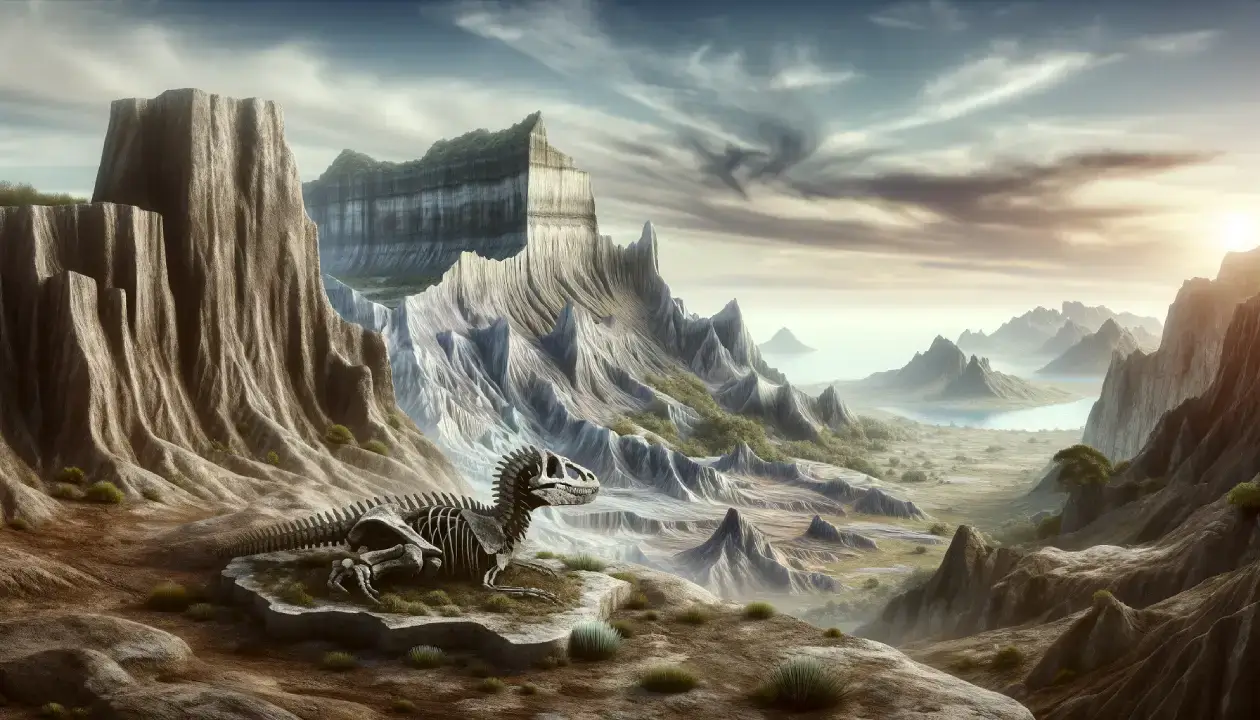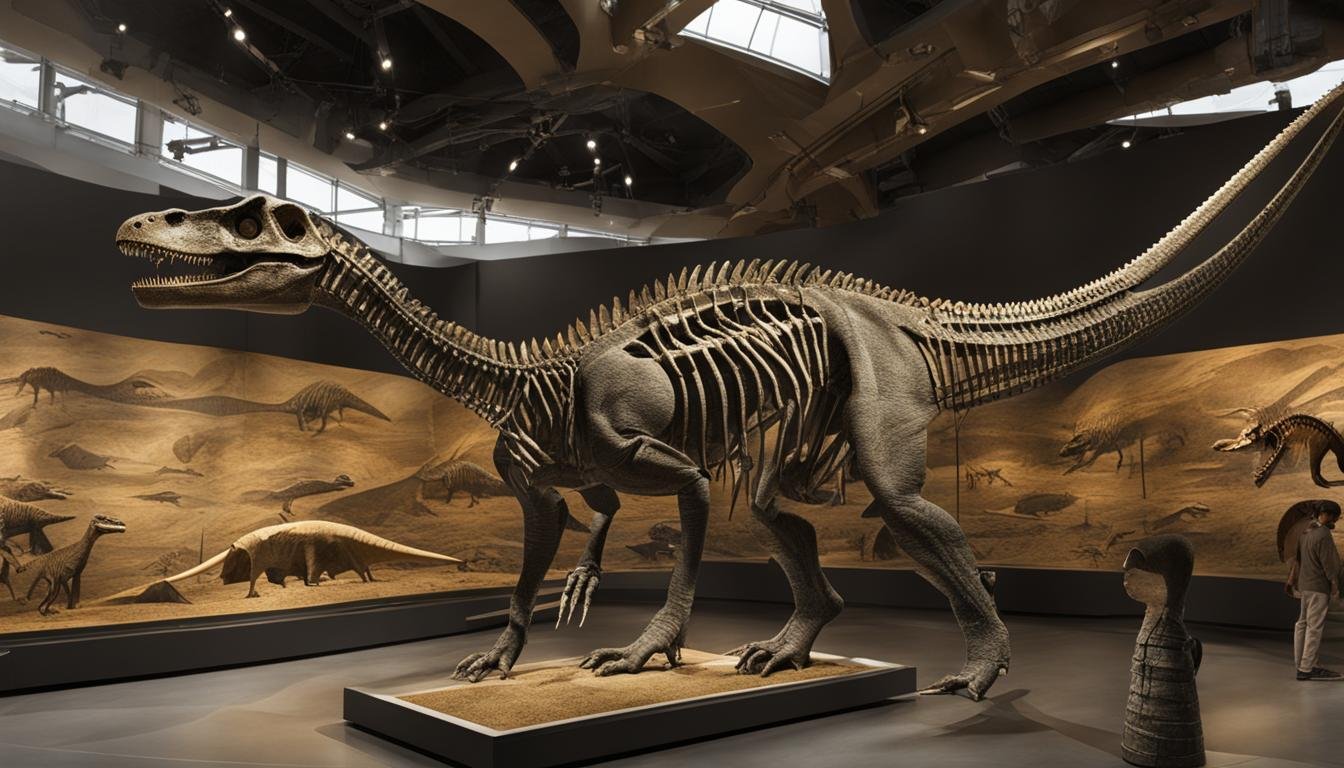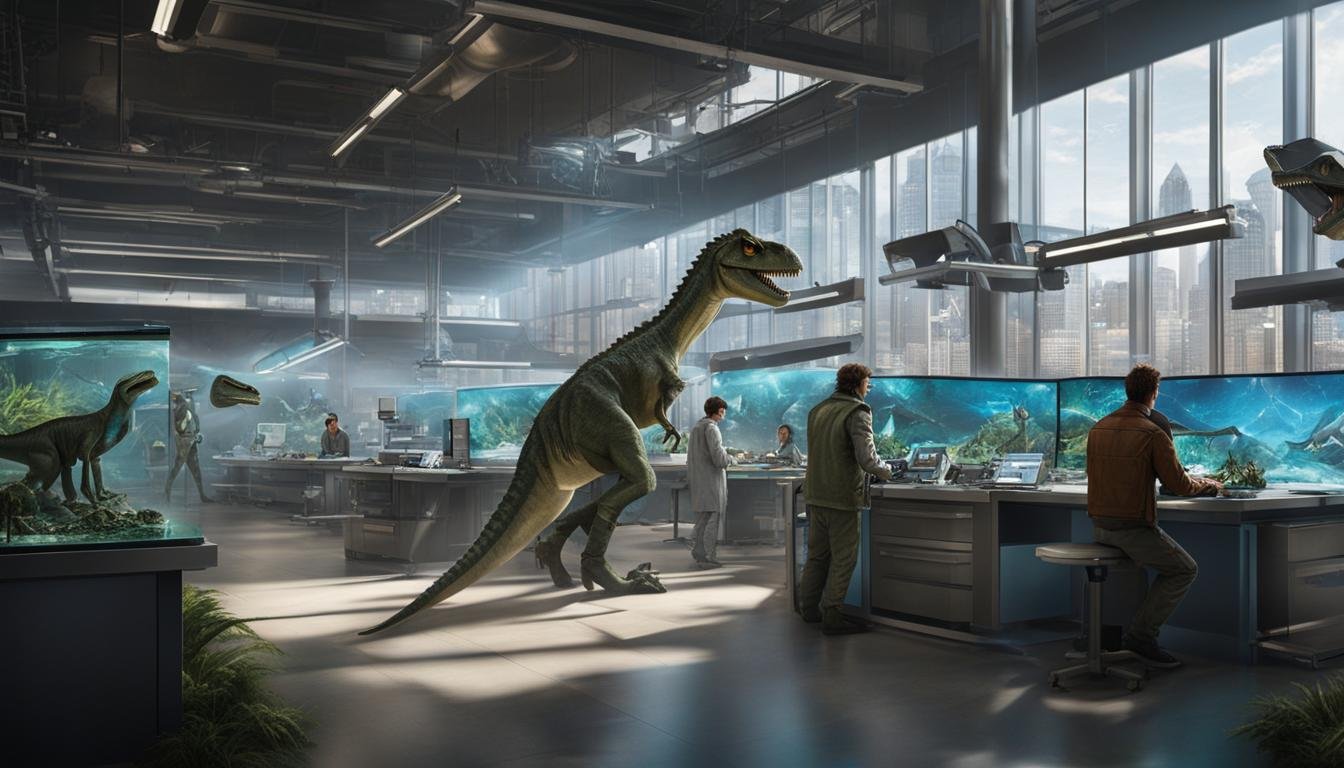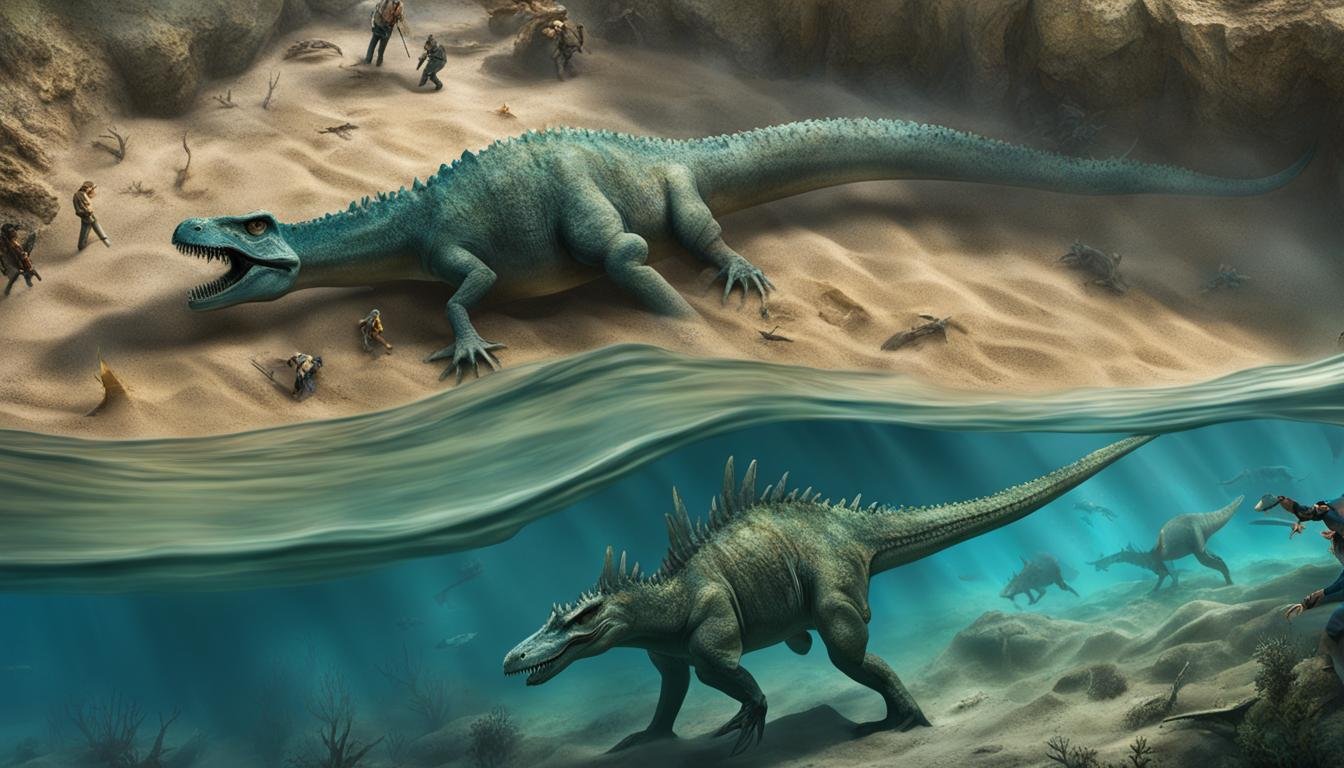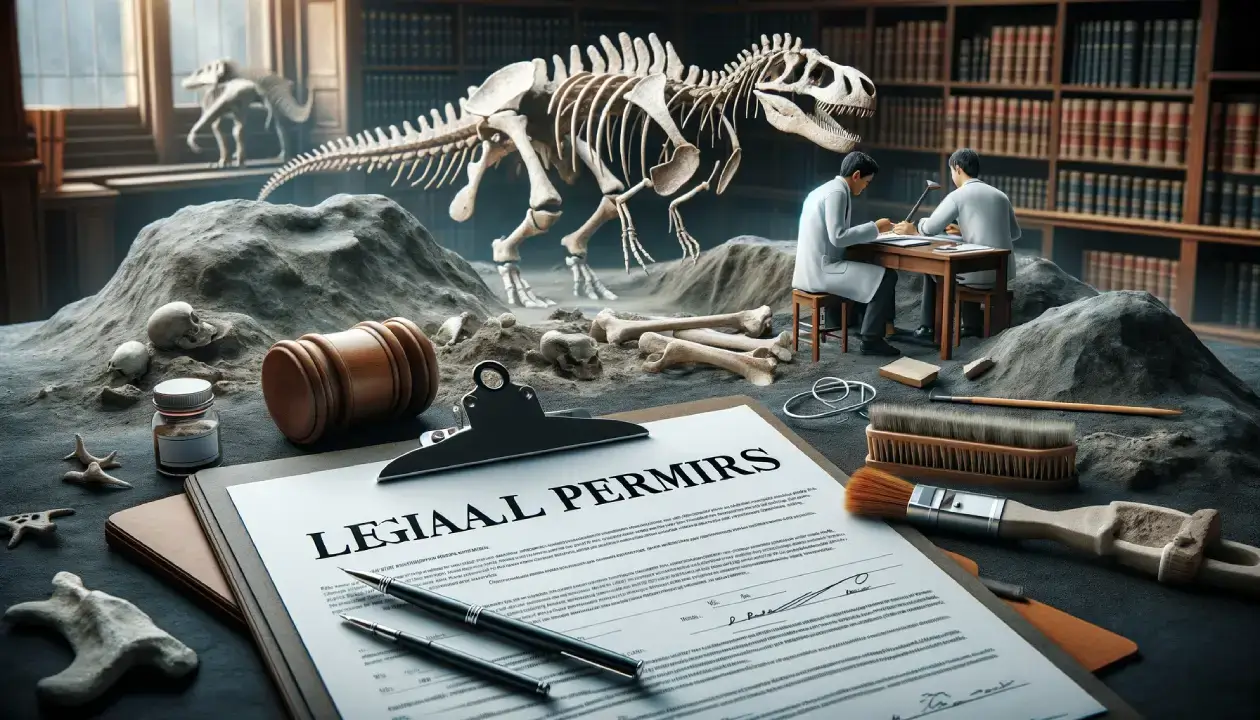Welcome to our exploration of the fascinating relationship between erosion, weathering, and the discovery of fossils. In this article, we’ll delve into how these geological processes shape the landscape and contribute to the preservation and exposure of fossilized remains. Join us as we uncover the hidden secrets of our planet’s history!
| Key Takeaways | Details |
|---|---|
| Erosion and Weathering Reveal Fossils | These processes break down rocks and expose fossilized remains, playing a crucial role in the discovery of fossils. |
| Role of Physical and Chemical Weathering | Physical weathering breaks down rocks through natural forces, while chemical weathering involves alteration due to acids or oxygen, contributing to fossil exposure. |
| Erosion’s Contribution | Erosion, mainly through wind and water, transports particles, uncovers buried fossils, and shapes landforms which are ideal for discovering fossils. |
| Understanding Erosion and Weathering Interplay | This is crucial for uncovering Earth’s past, as it helps understand how fossils are preserved and exposed over time. |
| Physical Weathering’s Impact on Fossil Preservation | Physical processes like temperature changes and crystal growth contribute significantly to the exposure and preservation of fossils. |
| Chemical Weathering’s Role in Fossil Formation | Chemical alteration of rocks gradually wears away the surrounding material, aiding in fossil release and formation. |
| Erosion’s Role in Creating Fossil-Rich Landforms | Erosion shapes unique landforms like dunes or badlands, which are known for rich fossil deposits. |
| Importance of Studying Erosional Impacts on Fossil Detection | Understanding how erosion exposes and affects fossil detection is key to identifying fossil-rich areas and gaining insights into Earth’s history and evolution of life. |
| The Continuous Cycle of Weathering and Erosion | This ongoing cycle is essential in bringing fossils to the surface, allowing scientists to study Earth’s geological history and the evolution of life. |
The Processes of Erosion and Weathering
Erosion and weathering are two fundamental processes that greatly impact fossil discovery and formation. These processes work hand in hand, shaping the Earth’s surface and revealing the hidden remnants of ancient life. Understanding how erosion and weathering affect fossil preservation is crucial for paleontologists and geologists alike.
Erosion, the removal of sediment by wind or water, plays a significant role in the exposure of fossils. Wind can transport fine particles across vast distances, while water can carry sediments of all sizes. As these sediments are moved, the layers of rock that once entombed fossils are gradually eroded away, bringing these long-buried treasures to light.
Weathering, on the other hand, breaks down rocks through physical and chemical means. Physical weathering occurs due to factors like temperature fluctuations, growth of foreign crystals, and collisions between rock pieces. Chemical weathering takes place when rocks are altered by exposure to acid or oxygen. Both physical and chemical weathering can lead to the disintegration of rocks and the exposure of hidden fossils.
By analyzing the processes of erosion and weathering, scientists can gain valuable insights into the formation and discovery of fossils. These geological phenomena are not only fascinating in their own right, but they also hold the key to unlocking the secrets of our planet’s ancient past.
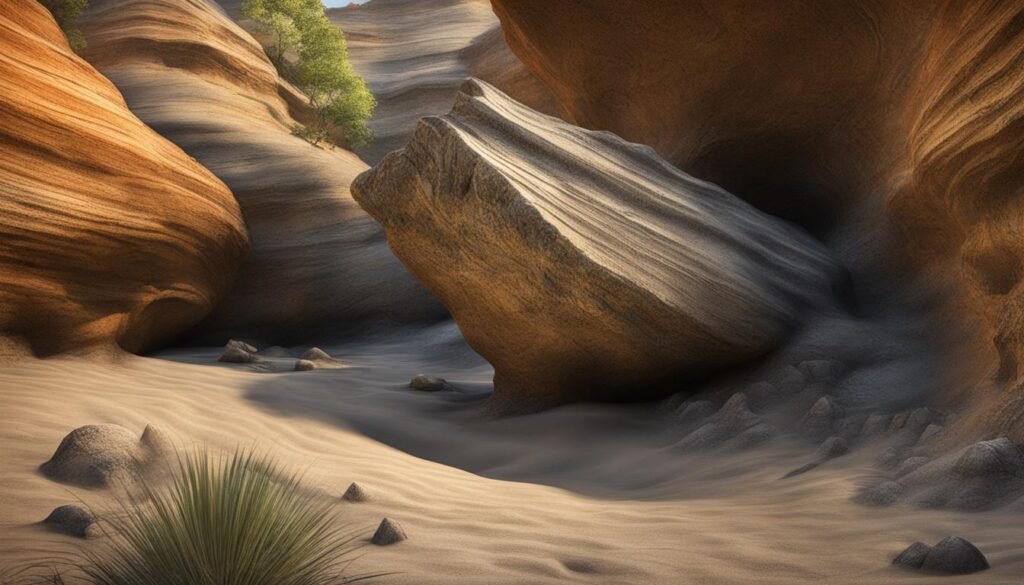
The Impact of Erosion and Weathering on Fossil Formation
The interplay between erosion, weathering, and fossil formation is a dynamic process that shapes the Earth’s landscape. Erosion carries away the products of weathering, continually reshaping the Earth’s surface and uncovering fossilized remains. As sediments are transported, fossils that were once buried deep within layers of rock are exposed, allowing scientists to study and understand the organisms that once inhabited our planet.
“Erosion and weathering are like nature’s archaeologists, gradually uncovering the secrets of our planet’s past.” – Dr. Sarah Roberts, Paleontologist
Physical weathering, such as the expansion and contraction of rocks due to temperature changes, can weaken and break them apart. This process, along with the growth of foreign crystals and the impact of external forces, contributes to the fragmentation of rocks and the release of fossilized remains. The chemical alteration of rocks through exposure to acids or oxygen also plays a role in fossil formation by gradually wearing away the surrounding matrix.
Through the combined forces of erosion and weathering, fossils are brought to the surface and made accessible to scientists and researchers. The ongoing processes of erosion and weathering continue to shape our understanding of Earth’s history and provide valuable clues about the evolution of life on our planet.
| Impact of Erosion on Fossil Discovery | Impact of Weathering on Fossil Formation |
|---|---|
| Erosion exposes fossils that are buried within sediment. | Physical weathering can cause rocks to break down, exposing fossils hidden within. |
| Erosion creates landforms, such as badlands, that provide ideal conditions for fossil discovery. | Chemical weathering alters rock matrix, gradually wearing away surrounding material and releasing fossils. |
The Impact of Physical Weathering on Fossil Preservation
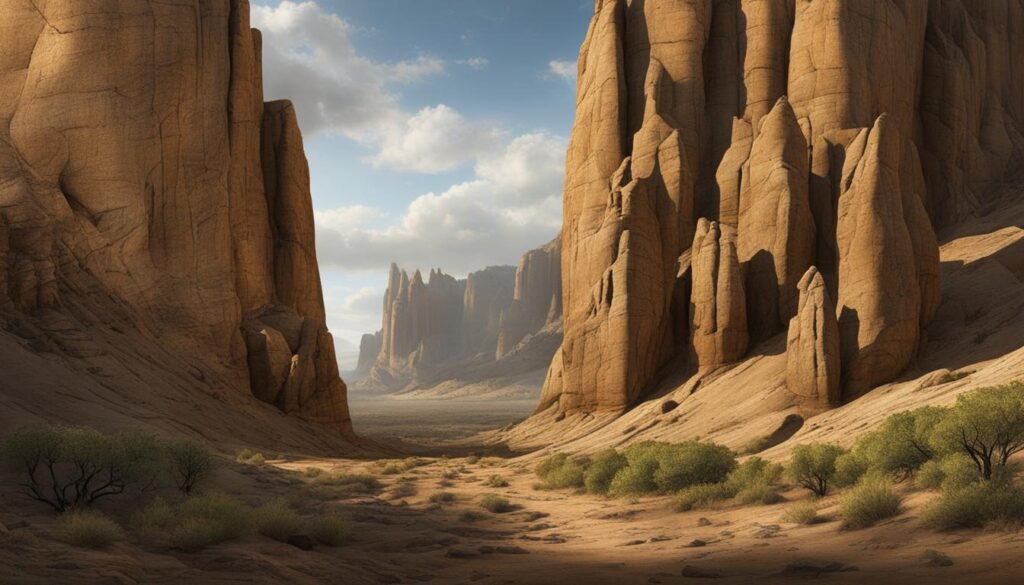
Physical weathering plays a significant role in the preservation and discovery of fossils. This process involves the breaking down of rocks through various mechanisms, resulting in the exposure of fossilized remains. One common form of physical weathering is the heating and cooling of rocks, which can cause them to develop cracks and eventually crumble. In areas with extreme temperature variations, such cycles of heating and cooling can accelerate the breakdown of rocks, revealing the hidden fossils within.
In addition to temperature fluctuations, the growth of foreign crystals can also contribute to physical weathering. For example, the expansion of ice or the deposition of salts can exert pressure on rocks, leading to their fragmentation. As a result, fossils that were once encased in solid rock layers become exposed and vulnerable to further erosional processes.
“Physical weathering is a fascinating process that exposes the delicate fossils that lie beneath the surface. The forces of nature, such as temperature changes and the growth of crystals, work together to break apart rocks and unlock the ancient secrets within.”
The impact of physical weathering on fossil preservation cannot be underestimated. Without these erosional processes, many fossils would remain hidden deep within the Earth’s layers. It is through the continuous cycle of weathering and erosion that these remarkable remnants of the past are brought to light, allowing scientists and researchers to unravel the mysteries of our planet’s history.
| Process | Description |
|---|---|
| Thermal Expansion and Contraction | Repeated heating and cooling of rocks cause them to expand and contract, leading to the development of cracks and fractures. |
| Crystal Growth | The growth of foreign crystals, such as ice or salts, exerts pressure on rocks, causing them to break apart. |
| Frost Shattering | Freezing and thawing of water within rock crevices can cause the rock to break apart. |
| Exfoliation | The outer layers of rocks peel away due to the release of pressure, exposing the underlying fossils. |
The Role of Erosion in Fossil Discovery
Erosion plays a crucial role in the discovery of fossils, as it is the primary agent that moves sediment and exposes buried remains. Both wind and water contribute to the erosional impacts on fossil detection. Wind can transport fine particles like silt over long distances, while water can carry particles of all sizes. When water erodes rock material, especially during storms or snow melt, it uncovers fossils that are hidden within the sediment. The constant adjustment of water channels and changing stream beds further contribute to the erosion and exposure of fossils.
In addition to exposing fossils, erosion also plays a role in the formation of landforms that provide ideal conditions for fossil discovery. For example, the erosion of rocks by water can create dunes or badlands, which are known for their rich fossil deposits. These unique landforms, shaped by the relentless forces of erosion, offer valuable insights into the Earth’s geological history and the organisms that inhabited it.
To better understand the role of erosion in fossil discovery, let’s take a closer look at a table that highlights different erosional impacts on fossil detection:
| Erosional Impact | Description |
|---|---|
| Water Erosion | The erosion of sediment by water, especially during storms or snow melt, exposes fossils buried within the sediment. |
| Wind Erosion | Wind carries fine particles, such as silt, over large distances, potentially exposing fossils in new areas. |
| Channel Adjustment | Changing stream beds and the constant adjustment of water channels can lead to the erosion and exposure of fossils. |
| Creation of Landforms | Erosion contributes to the formation of unique landforms, such as dunes or badlands, which can provide ideal conditions for fossil discovery. |
By understanding the erosional impacts on fossil detection, researchers can effectively identify areas where erosion has exposed fossil-rich sediments. This knowledge is crucial in uncovering the remnants of past life, providing valuable insights into the Earth’s history and the evolution of various organisms.
Conclusion
The impact of erosion and weathering on fossil discovery is truly remarkable. These geological processes play a crucial role in shaping our planet’s landscape and exposing the fossilized remains that hold the secrets of Earth’s history.
Through the processes of physical and chemical weathering, rocks break down over time, creating cracks and exposing the fossils hidden within. The constant cycles of heating and cooling, along with the growth of foreign crystals, contribute to the deterioration of rocks, ultimately revealing the fossil treasures they hold.
Erosion, on the other hand, acts as nature’s way of carrying away the weathered material. Wind and water play a significant role in this process, transporting sediment and particles created by weathering. As water flows and wind blows, fossils that were once buried deep within the earth’s layers are exposed, ready to be discovered.
Understanding the interplay between erosion, weathering, and fossil discovery is essential in unraveling the mysteries of our planet’s past. By studying the effects of weathering on fossil remains and recognizing the role of erosion in uncovering these remnants, scientists can piece together a more complete picture of Earth’s ancient history.

